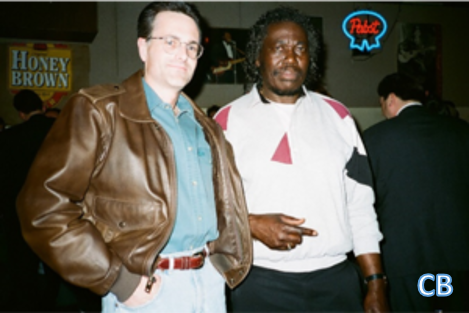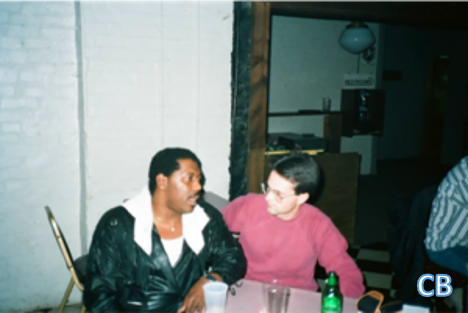Recommended Blues Recording
Baby Boy Warren - Detroit Blues Supreme
Baby Boy Warren – Bad Lover Blues – Soul Jam Records 806192
It’s startling when such great blues is known to only the most seasoned of blues fans. This is truly a significant collection of blues recordings, one that commands broad exposure. I believe that you will agree.
A friend of mine and I have stated that we were born a generation too late. That’s an interesting statement, but what’s the context behind it; right? In our case, living within 90 miles of Chicago, we’d been very excited to have been born around 1930 rather than the 1960 time period. To have been born at such an earlier period would have allowed us the opportunity to have been living during that thrilling period when all of the Chicago blues giants were at their peak. I can’t imagine being able to have to pick a club to visit on a Friday or Saturday night in Chicago when Muddy Waters, Howlin’ Wolf, Little Walter, Sonny Boy Williamson II, or any other of the post-war titans, were playing in the city at the same time. Merely speaking in terms of this possibility raises the proverbial hair on my neck.
But it’s interesting, I believe, that when I fantasize about the ability to see and hear my blues heroes in performance during their most vibrant periods, that I immediately default to the Chicago scene. Sure, most of that sentiment results from the close proximity to Chicago from which I would live in my imaginary generation earlier life (using where I still live now as the basis for that thought). But so many other nearby metropolitan areas were thriving with eminent blues artists at that time who didn’t enjoy the personal and professional exposure afforded the Chicago blues performers.
After WW II, when the great black migration out of the deep south occurred, Chicago obviously wasn’t the only large U.S. city that experienced an influx of people seeking a better life free of the harsh oppression of the southern U.S. For example, Detroit offered the opportunity for gainful employment in the auto plants and supporting industries, all the while also offering the ability to live in certain urban enclaves with similar ex-southern folks. To be sure, in Detroit, Hastings Street was alive with black culture, a place where communal living and experiences could be shared. It represented a place of comfort and familiarity amidst the sprawl of Detroit’s urban landscape. Chicago wasn’t the only place where urban blues was started and nurtured.
So, it was only natural that the totality of migrating black southern culture would also include bringing the blues to Detroit. Make no mistake, the blues was already in Detroit, but the sheer numbers of southern blacks coming into the city post-war brought with it a density of talent not before seen. But when many blues fans think of Detroit blues, they most likely call John Lee Hooker to mind. And I can’t say that’s an unreasonable response, given the great blues Hooker recorded while in Detroit for the Sensation label. That work began Hooker’s career and led to a long and celebrated run that saw him also record for the Chess, Vee-Jay, Stateside, Crescendo, United Artists, BluesWay, and a host of other labels. His collaborations with Canned Heat, Van Morrison, Carlos Santana, and Bonnie Raitt, among others, brought immense fame and opportunities for Hooker. In the end, all this long-running exposure would naturally point to Hooker as the face of Detroit blues.
But, Hooker wasn’t the only gifted blues talent in Detroit. Far from it. Detroit attracted and nurtured its share of blues talent, in part, due to the number of small record companies within its borders, including the J-V-B, Battle, Von, Staff, Prize, Fortune, Hi-Q, the aforementioned Sensation, and Strate-8 labels, among others. No doubt, some of these labels were small in capacity, but nonetheless, they offered recording opportunities for Detroit blues musicians such as Eddie Kirkland, Bobo Jenkins, Eddie Burns, Little Sonny, and Baby Boy Warren.
All the songs on this astounding CD were recorded over a six-year period between 1949-1954. The tracks vary from the most basic of lineups including Warren and his guitar plus a piano player, to complete band ensembles including various combinations of bass, piano, drums, washboard, harmonica, and tenor saxophone. Front-to-back, the 20 tunes presented here do not provide one moment of dissatisfaction. Each triumphs on its own merits. This is just flat-out great blues!
First, I need to comment on Warren’s singing style. In modern Chicago blues, I’ve always held Chicago bluesman Willie Kent’s vocal ability in the highest regard. Kent didn’t just sing, he bellowed, but never in any out-of-control way. Rather, his was always in a completely declamatory style that demanded attention. That style is highly-apparent on the majority of Warren’s blues here. In fact, listening to the beginning of this CD when Warren is only backed by a piano, his vocal work during the songs make the proceedings feel like, if I closed my eyes, I am listening to him in-performance in some small bar or club. Except for Warren’s “Sante Fe”- and “Mattie Mae”-related tunes in this collection (and there are a few variations on those recordings) where Warren brings his singing down to a more controlled heft, his powerful vocals abound.
Merging from the more pared ensembles comprised of only Warren and a piano player, the blues presented here meld various band member aggregations into uniformly satisfying wholes. At times, as I previously stated, it hit me how improbable it is it that these amazing blues have been known but to only the most veteran of blues fans and researchers. The CD jacket details the backing musicians, yet to a one, their contributions are of the highest quality and capabilities, complimenting the outings in nothing short of superb efforts. The quality of blues here is remarkable.
As mentioned before, there are a few reworkings of what can be argued are Warren’s best-known blues, “Sante Fe” and “Mattie Mae”. The listener of this CD will immediately recognize them. In what is not always the case, however, I found the alternate versions to be surprisingly enjoyable, and a delight to hear in their varied presentations. I am not usually a fan of alternate takes being included on CDs, but these different song versions succeed.
Also, this collection provides what are essentially a couple of harmonica workouts for Sonny Boy Williamson II (in addition to other songs where he acted in an accompanist role). These cuts, too, are varied takes on the same song, but, their separate uniqueness makes for grand enjoyment, indeed. I make no apologies for being a fan of Sonny Boy Williamson II, cannot hide my bias toward his blues here, and having these cuts available with such excellent sound quality provides terrific excitement.
Detroit’s major contributions to the blues did not stop in the late 1950s. Later-day Detroit area blues musicians such as The Butler Twins, Steve Nardella, Jim McCarty, Thornetta Davis, Willie D. Warren, Dr. Ross, Johnny “Yard Dog” Jones, Harmonica Shah, Eddie Burns, Mr. Bo, and Bobo Jenkins, among others, ensured that the immediate post-war brand of Detroit blues did not fade away, and that it also only continued to grow.
Certainly, a survey of early Detroit blues featuring Charlie Spand, Speckled Red, William Ezell, Big Maceo, and many others, and their contributions to the Detroit blues scene, is in order down-the-road.
Fortunately, this Baby Boy Warren survey, Bad Lover Blues, is available, providing a glimpse into the notable talents of this vital Detroit bluesman. The blues that originated out of post-war Detroit is of the utmost worth and influence. This is a blues collection that is highly-recommended, and is again proof of the depth of blues ability outside of the more celebrated urban blues locations.
Pick this one up!


